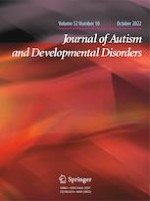20-10-2021 | Original Paper
A Mixed-Methods Investigation of Diagnostician Sex/Gender-Bias and Challenges in Assessing Females for Autism Spectrum Disorder
Gepubliceerd in: Journal of Autism and Developmental Disorders | Uitgave 10/2022
Log in om toegang te krijgenAbstract
Despite the importance of clinical judgement in autism spectrum disorder (ASD) assessment, little is currently known about challenges faced by diagnosticians when the client is female, any sex/gender biases during the assessment process, and how these issues affect diagnostic outcomes. Forty-seven ASD diagnosticians completed a questionnaire containing two hypothetical case studies (a ‘male’ and ‘female’ ASD presentation), with sex/gender randomly assigned within each. Diagnosticians reported greater ASD symptom severity when female sex/gender pseudonyms were allocated to the case studies, but their confidence in ASD diagnosis was similar regardless of condition. Diagnosticians identified a large number of challenges associated with assessing females for ASD. Many of these related to sex/gender differences in ASD presentation and limitations of diagnostic instruments.
